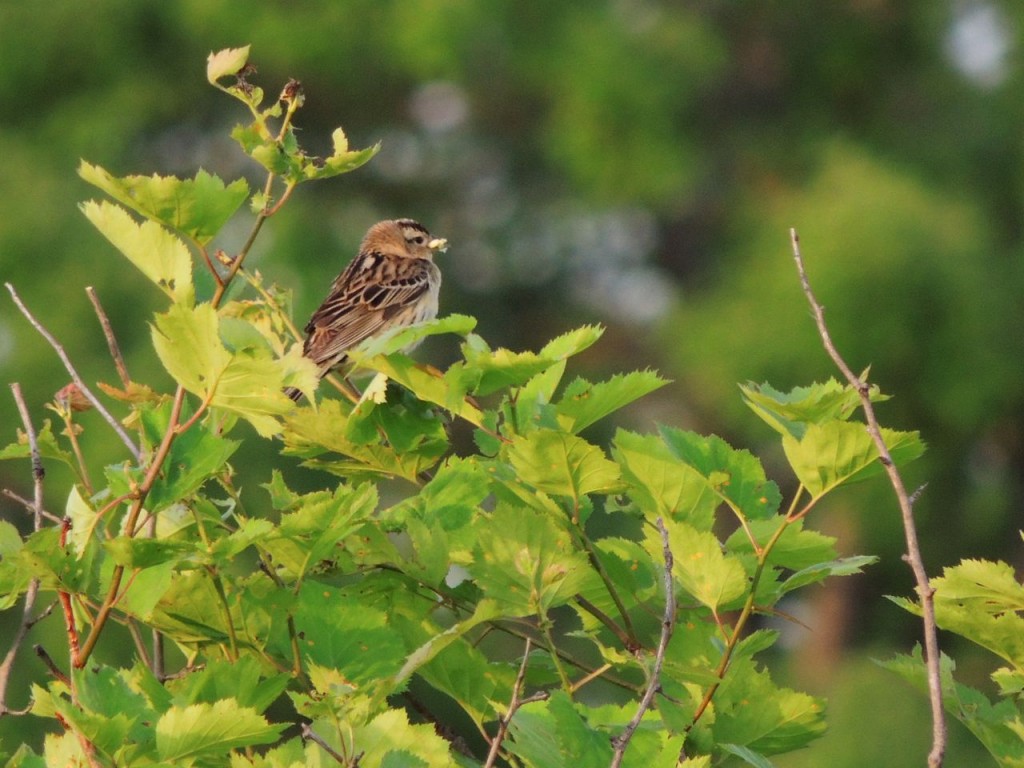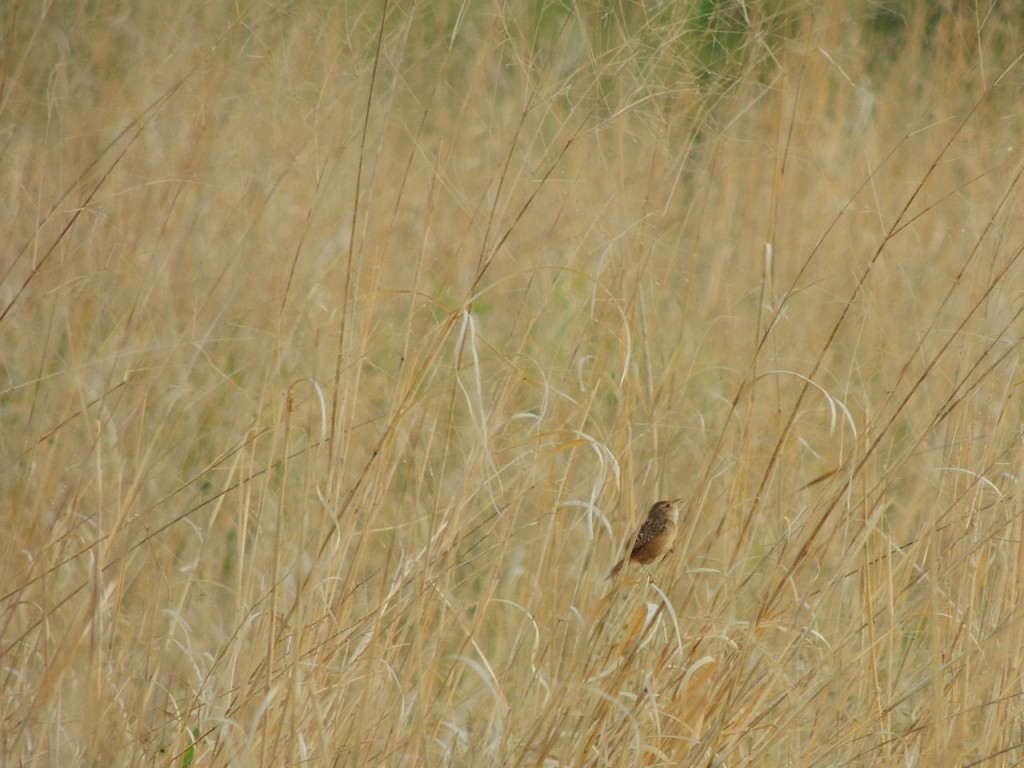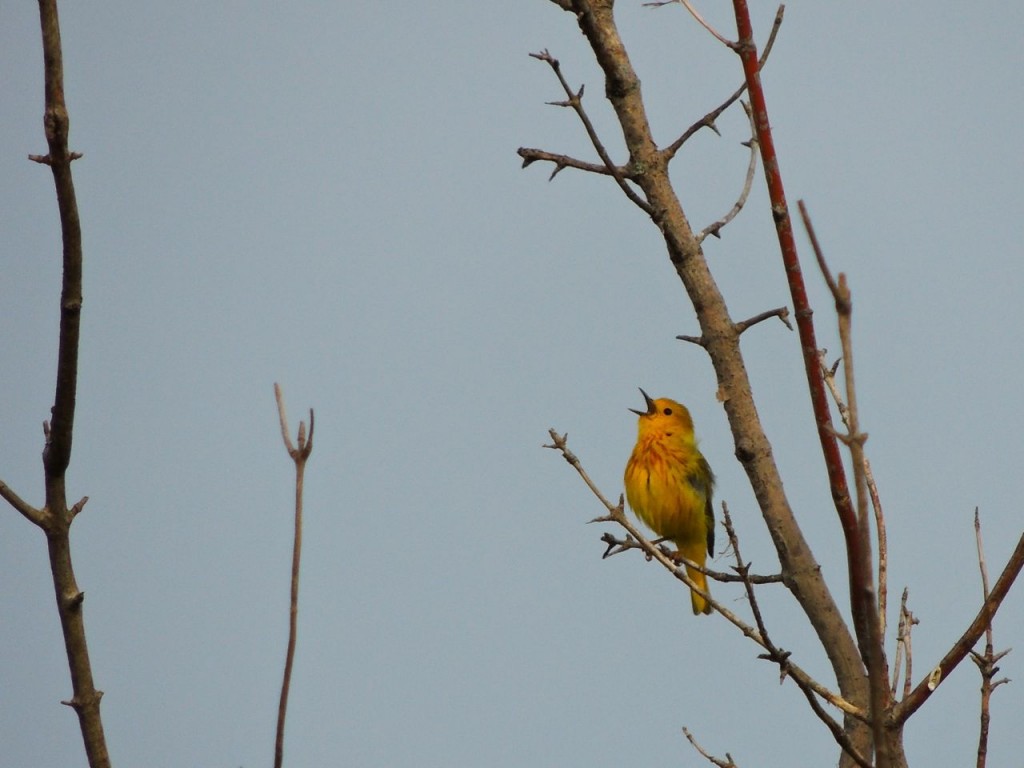10 June 2014. Burlington, ON. A little bit short of time today (for reasons that will become apparent in the next few days), but time enough to head out at first light to look for some grassland birds. I went to a provincial park not far from home, to an area that was formerly farmland and has not so far been transformed into picnic areas or sports fields. June is a nice time to see birds, the great rush hour being done, the birds are active on territory either establishing or confirming ownership through energetic song, or feeding young. You don’t need to spend as much time looking for birds, now you can enjoy looking at them.

My tally this morning included Grasshopper, Savannah, Field and Song Sparrows all purposefully zipping from one lookout to another and anxiously singing and chipping to let me know I had no right to be there. I could see and hear Bobolinks including this food-carrying female. A rather splendid Brown Thrasher followed me along a hedgerow, singing occasionally but was noticeably more intent on making sure I meant no harm. An Alder Flycatcher had firm control of the area around an old hawthorn, until the thrasher showed up that is, whereupon the flycatcher deferentially stepped to one side; apparently there’s no point squabbling with a Brown Thrasher over who gets top branch.
The sparrows, thrasher and flycatcher photos are in a gallery visible only on the website, not if you’re reading this as an email.
Bird of the Day was a small group of Sedge Wrens who had taken possession of a couple of acres of old grassy field. You don’t see Sedge Wrens very often, although their relative the Marsh Wren is reasonably common, so hearing the electric chatter that is their hallmark was a special event for me. I was lucky to get this picture of one from some distance away. They move around from one grassy spot to another in a fast-whirring low-level flight that takes some concentration to follow.

Finally, if Yellow Warblers weren’t so common we might celebrate them a bit more than we do. They really are sensational; the chestnut streaks is the field mark that makes this one a male.




